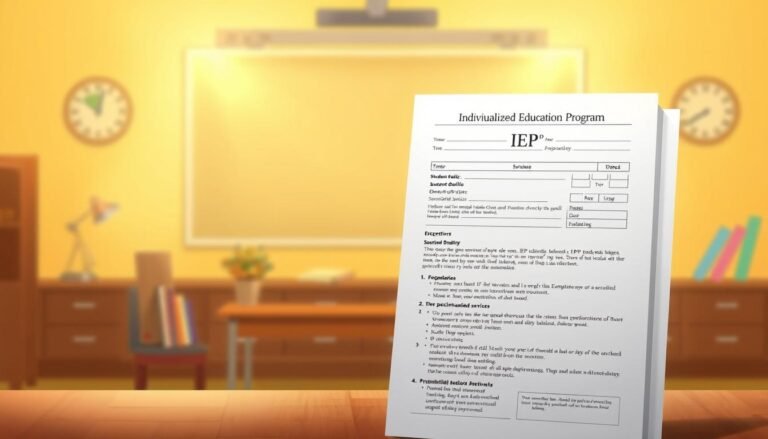
The Essential Truth About The Impact of Language-Based Learning Disabilities on Academic Achievement: What You Need to Know
Introduction
Imagine a bright student, full of potential and dreams, who struggles to express their thoughts or to decode written texts. This student may be facing challenges related to language-based learning disabilities (LBLDs)—a term encompassing various disorders that affect the ability to listen, think, speak, read, write, or do mathematical calculations. Understanding the impact of language-based learning disabilities on academic achievement is crucial, as it not only affects individual students but also shapes the educational landscape itself. This article seeks to unravel what you need to know about LBLDs, their effects on academic success, and what strategies can be implemented to support affected students.
What Are Language-Based Learning Disabilities?
Definition and Types
Language-based learning disabilities refer to a range of disorders that can significantly impact a student’s academic performance. Common types include:
- Dyslexia: Affecting reading and language processing.
- Dysgraphia: Impacting writing abilities.
- Dyscalculia: Pertaining to difficulties with numbers and math concepts.
- Specific Language Impairment (SLI): Affecting comprehension and use of spoken language.
Understanding the impact of language-based learning disabilities on academic achievement begins with identifying these types, as each presents unique challenges that can greatly influence a student’s schooling experience.
Prevalence of LBLDs
Recent statistics indicate that approximately 5% to 15% of school-aged children may have a language-based learning disability. While the exact figure can vary based on definitions and assessments, it’s clear that a significant number of students face these challenges. This leads us to an essential disconnect in education—many educators may not fully understand the realities or subtleties of LBLDs, often leading to underdiagnosis or misdiagnosis.
The Academic Landscape: How LBLDs Affect Achievement
Cognitive Aspects of Learning
Studies indicate a direct correlation between cognitive processing issues and academic performance. Students with learning disabilities may struggle with phonemic awareness, working memory, or processing speed, all of which are crucial for success in literacy and numeracy.
Case Study: Jacob’s Journey
Jacob, a 10-year-old boy diagnosed with dyslexia, experienced significant struggles with reading comprehension. Despite his keen interest in science, Jacob often found it challenging to complete assignments on time because decoding text was labor-intensive for him. Teachers initially misinterpreted Jacob’s delays as a lack of effort, unaware that his learning disability significantly hampered his academic achievement. After implementing tailored reading interventions, his grades improved dramatically within a year, illustrating the impact of language-based learning disabilities on academic achievement when proper support is provided.
Social and Emotional Considerations
The emotional toll of LBLDs is profound. Students may face frustration, low self-esteem, and anxiety, which can further hinder their academic progress.
Case Study: Maria’s Resilience
Maria, who has a specific language impairment, faced bullying due to her difficulties in expressing herself verbally. This social isolation began to affect her motivation and consequently, her school performance. However, after engaging in an inclusive classroom where teachers fostered a supportive environment, Maria flourished both socially and academically. Her story highlights the connection between emotional well-being and academic success, underlining what you need to know about creating empathetic learning spaces.
Strategies for Supporting Students with LBLDs
Understanding the impact of language-based learning disabilities on academic achievement opens the door to effective interventions. Here are several strategies that educators, parents, and peers can employ:
1. Early Identification and Intervention
Early diagnosis is key to effective support. Screening for learning disabilities in kindergarten can lead to timely interventions, allowing students to receive the support they need as they progress through their academic careers.
2. Tailored Instructional Strategies
Differentiate instruction based on individual needs. Implementing multi-sensory teaching methods—like the Orton-Gillingham approach—can cater to various learning styles, addressing the specific challenges posed by LBLDs.
3. Assistive Technology
Leveraging technology, such as text-to-speech software or speech recognition tools, can significantly aid students with LBLDs. These tools help in bypassing some of the barriers imposed by traditional learning methods.
4. Foster a Positive Classroom Environment
Create a classroom ethos that prioritizes inclusion. Encourage collaboration and peer support, which fosters self-efficacy and a sense of belonging among students with LBLDs.
5. Ongoing Professional Development
Educators must engage in continuous learning about LBLDs. Workshops and training focused on observable signs of LBLDs can equip teachers to identify students in need more effectively.
6. Encouragement and Motivation
Finally, recognize and celebrate small victories. Providing positive reinforcement can motivate students and help them build confidence, crucial for overcoming academic hurdles.
Tables and Data Analysis
Table 1: Comparison of Academic Performance Among Students with and Without LBLDs
| Student Group | Average Reading Level | Average Math Level | Percentage Passing Standardized Tests |
|---|---|---|---|
| Students with LBLDs | 2.5 | 3.0 | 40% |
| Students without LBLDs | 4.0 | 4.5 | 85% |
The disparity in academic performance showcases the impact of language-based learning disabilities on academic achievement and provides a quantitative base for the necessity of early intervention strategies.
Table 2: Efficacy of Various Interventions
| Intervention Type | Improvement Percentage | Notes |
|---|---|---|
| Multi-sensory Instruction | 60% | Engages different learning modalities |
| Assistive Technology | 45% | Accommodates diverse abilities |
| Peer Tutoring | 35% | Encourages cooperative learning |
These statistics reinforce that targeted interventions can yield significant improvements in academic outcomes for students facing challenges due to LBLDs.
Conclusion
The journey through the impact of language-based learning disabilities on academic achievement reveals a pathway filled with obstacles and possibilities. While LBLDs present unique challenges that can hinder academic performance, understanding and addressing these issues can lead to real, transformative change. By recognizing the signs, implementing effective strategies, and creating supportive environments, educators and caregivers can empower students to thrive.
As we conclude this exploration, remember that every student has the potential for greatness. With the right tools and support, we can bridge the gap between the challenges posed by LBLDs and the heights they can achieve.
FAQs
1. What are the signs of language-based learning disabilities?
Common signs include difficulties with reading, writing, spelling, and expressing or understanding language. Children may also display inconsistencies in academic performance.
2. How can I support a child with LBLDs at home?
Encouragement, using multi-sensory learning activities, and establishing routines can help. Reading together and practicing vocabulary in fun ways are also beneficial.
3. Are all learning disabilities the same?
No, language-based learning disabilities vary. Each type, such as dyslexia or dyscalculia, affects different aspects of learning and requires tailored support.
4. How do schools typically support students with LBLDs?
Schools often provide accommodations like extra time on tests, specialized instruction, and assistive technology. IEPs (Individualized Education Programs) are a crucial component for many students.
5. Can students with LBLDs succeed in higher education?
Yes! With appropriate support and accommodations, many students with LBLDs thrive in college and beyond. Early intervention and self-advocacy are critical factors.
6. Where can I find resources for learning more about LBLDs?
Many organizations, like the International Dyslexia Association and Learning Disabilities Association of America, offer resources, workshops, and support networks for families and educators.
Conclusion Note
The conversation surrounding the impact of language-based learning disabilities on academic achievement must continue. Let us advocate for awareness, understanding, and support for all students to ensure equitable access to education, propelling them toward success in learning and life.
















